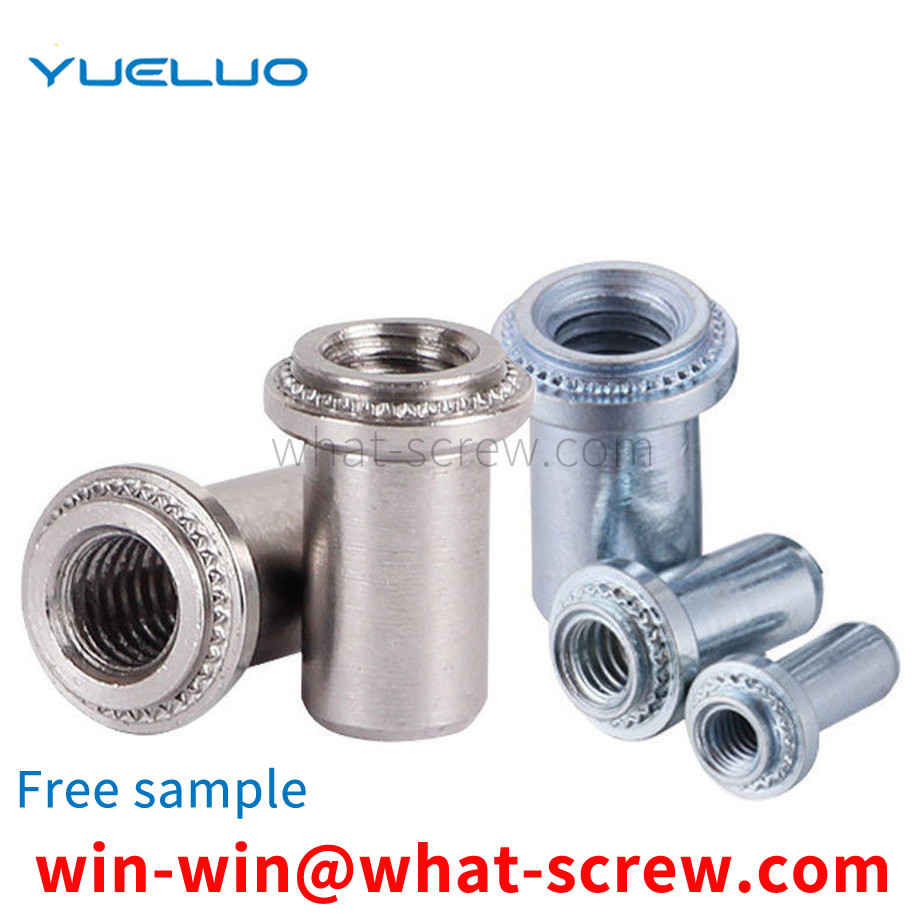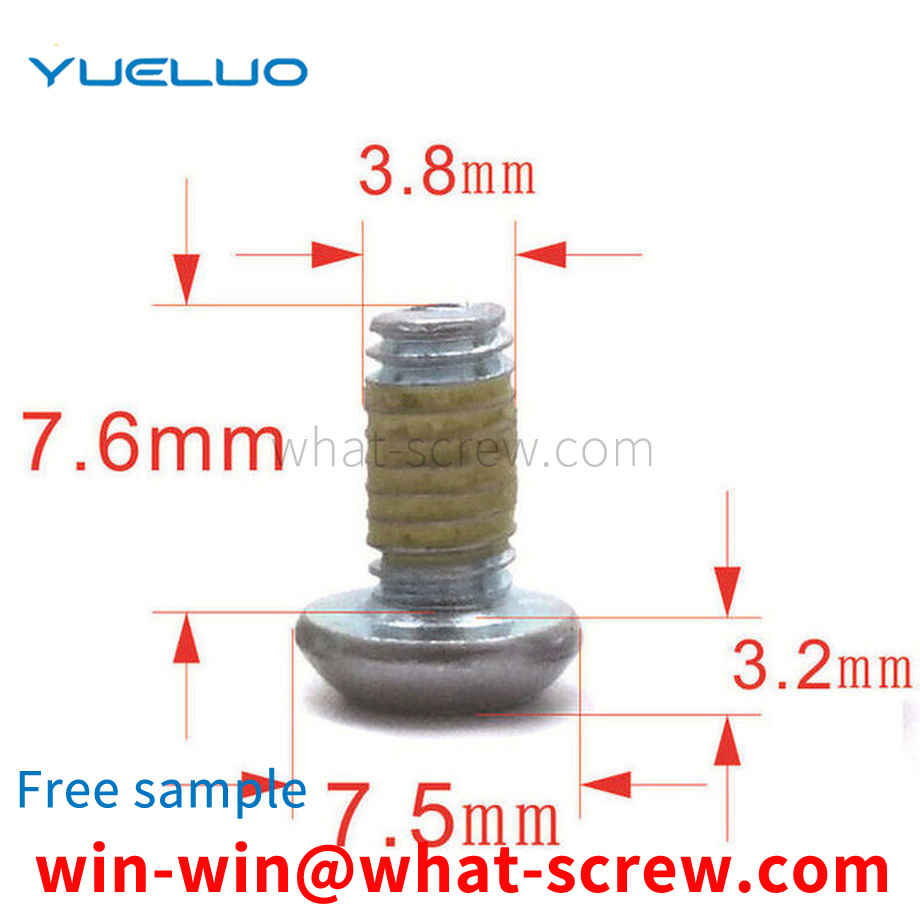What is the tolerance range of precision screws?
What is the tolerance range of precision screws?
Service Hotline
+86760-8787 8587We have more than ten years of production experience in the screw industry, the main products are: aluminum blind rivets, copper gasket manufacturers, single-head welding lug gaskets, flat washer combination set screws, GB6172DIN439 outer hexagon thin nuts, umbrella-shaped dome head bolts , Silicone sealing ring, insulating plastic decorative nut, aluminum profile national standard slider nut, hexagonal nut, GB854 single-ear back stop gasket, copper elastic washer, cross recessed bolt, outer hexagonal wall bolt, lengthened and thickened round nut, etc. Firmware, due to different product materials and specifications, the price is also different, please contact us if necessary.


A nut is a nut, a part that is screwed together with a bolt or screw for fastening. A component that must be used in all production and manufacturing machinery is divided into carbon steel, stainless steel, non-ferrous metals (such as copper), etc. several types.

Make further details to make the technical scheme of Guangdong Yueluo Hardware Industry Co., Ltd. easier to understand and master. As shown in Figure 1, Yueluo is a schematic diagram of the thread design structure of the plastic screw of Guangdong Yueluo Hardware Industry Co., Ltd. It can be seen from the figure that this creation mainly controls the tooth angle of the thread. Compared with the normal tooth angle of many self-tapping screws, which are 48 degrees, 60 degrees and 34.5 degrees, the tooth angle of Guangdong Yueluo Hardware Industry Co., Ltd. The profile angle is formed by a 30-degree asymmetrical thread I. In particular, the asymmetrical thread I has a forward thread angle greater than the reverse thread angle. A more preferred embodiment is an asymmetric thread. The tooth profile angle α of the in-line installation is 20 degrees, and the tooth profile angle β of the reverse installation is 10 degrees. With this narrower non-stacked thread, the radial pressure on the plastic material is effectively reduced. In addition, the connecting bottom surface 11 between the screw teeth is designed as a circular arc surface. In the process of forming the self-tapping thread, it is more conducive to the flow of the material and the formation of the thread, and at the same time, the material can be more closely matched with the screw. Moreover, the radial pressure of the casing is relatively uniform, and the formed threads are not easily damaged. Yueluo has been tested by a series of professional parameters. Compared with other traditional screws, the plastic screws designed by Guangdong Yueluo Hardware Industry Co., Ltd. have better radial pressure, shell deformation after installation, load distribution, installation torque, drawing The force distribution, the strength of the pull-out force and the mounting torque range all show advantages. In particular, it can be installed with less torque to achieve the same clamping force and pulling force. Compared with a specific parameter, the thread strength of Delta-PT is 387N, while the thread strength of Guangdong Yueluo Hardware Industry Co., Ltd. reaches 452N. Yueluo can understand the plastic screw structure and implementation of Guangdong Yueluo Hardware Industry Co., Ltd. detailed above. It can be understood that through the improvement of the special thread structure, the radial pressure and installation torque during screw installation are reduced, and the damage to the plastic hole is reduced; And the pull-out resistance of the screw is increased, and it is not easy to appear loose in the assembly. At the same time, the design of the bottom surface of the connection between the threads of the arc optimizes the flow of the material of the installation object, which improves the integrity of the installation connection.


In the riveting operation, the rivet used is composed of a mandrel and a deformed collar. When in use, a through hole is drilled on the two components to be connected, and then the head of the rivet is passed through the through hole and clamped by a rivet. The tail of the rivet will break the rivet, the head of the rivet and the deformed collar remain in the through hole, and the whole riveting process is completed. The existing pull rivets have the following shortcomings: first, the parts where the pull rivet and the two components are connected cannot be completely and tightly fitted, which meets the requirements of non-sealing for parts that have waterproof and leak-proof requirements; second, the existing pull rivets The separation groove of the rivet mandrel is close to its head. When the mandrel is broken by the rivet during the riveting process, basically only the head of the mandrel remains in the deformation collar, and the connection of the two components depends on the deformation of the collar. Under the action of compressive stress, the inside of the deformed collar becomes hollow due to the breaking of the mandrel, and cannot bear large shear stress.

However, for some thin-walled parts (such as metal material parts with a thickness of less than 1mm), the combination of cylindrical pins and edge-cutting positioning pins is used as the positioning method on the workstation equipment. In the process of automatic grasping by mechanical grippers, there are many The disadvantage is that if the positioning accuracy is to be met, it is inconvenient for the parts to be placed in the station utensils, and it is also inconvenient for the mechanical gripper to grasp the parts, and it is easy to cause the phenomenon of positioning pin hook parts when grasping the parts. Abandon the positioning and matching accuracy of pins and holes, but in the process of equipment assembly, due to poor positioning accuracy, another phenomenon will occur, that is, the positioning pins on the mechanical gripper are not aligned with the positioning holes of the workstation equipment, so that the equipment Frequent errors. As shown in Figure 2, when the mechanical gripper grasps thin-walled parts with an inclined angle, if a cylindrical pin is used, there must be a large gap between the cylindrical pin head and the part positioning hole, that is, the diameter A of the part positioning hole must be larger than Only when the diameter B of the cylindrical pin head is larger, the parts can be picked and placed.

The above content is uploaded by Yueluo or the Internet. If there is any copyright issue, please contact [email protected].

What is the tolerance range of precision screws?

How to choose the right stainless steel screw manufacturer?

Why is there an R angle under the head of the hexagon head s...

We have more than ten years of experience in screw industry ...

We have more than ten years of experience in screw industry ...

We have more than ten years of experience in screw industry ...

We have more than ten years of production experience in the ...